Burt Rutan
SAMPE Global Team2023-01-05T19:30:06+00:00After serving with the U.S. Air Force as a flight test project engineer at Edwards Air Force Base, Burt Rutan became the director of the Bede Test Center for Bede Aircraft in Newton, KS.
After serving with the U.S. Air Force as a flight test project engineer at Edwards Air Force Base, Burt Rutan became the director of the Bede Test Center for Bede Aircraft in Newton, KS.
Composites have been used in space applications for decades, and their use continues to grow. Composite applications can be found on human spaceflight vehicles, satellites and payloads, and the launch vehicles that are used
 |
Xiao Chen is Head of the Section and Associate Professor at the Section for Structural Virtual Testing and Digitalization at the Department of Wind and Energy Systems at the Technical University of Denmark (DTU). His research focuses on structural integrity and digitalization using advanced testing, high-performance modeling, and cutting-edge digital technologies such as computer vision and AI. He is the Keynote Speaker at several international conferences. He leads several research projects on advanced testing and high-performance modeling of composite structures and digitalization for wind energy applications.
|
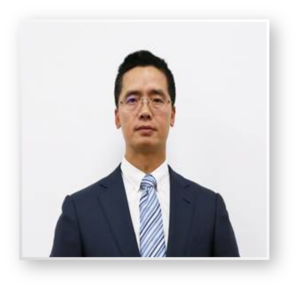 |
Bin Wang, General Manager of LSI Systems, senior engineer, over 28 years of material testing experience.
|
 |
Dr. Garcia has 20 years of industrial experience in the aerospace and defense industry. Prior to Weber State University (WSU), Dr. Garcia worked at Northrop Grumman managing a research group focused on the automated fabrication of carbon/carbon and ceramic matrix composites and also as a senior business development manager for the COI Ceramics organization in San Diego, California. He has extensive experience in the advanced manufacturing of composites working with new carbon and ceramic reinforcement fibers and developing new composite matrix materials, thermal protection systems, insulation, ceramic matrix and carbon/carbon composites. Dr. Garcia received a BS in Materials Engineering from California Polytechnic State University, San Luis Obispo and a doctorate in Engineering from Cornell University in Ithaca, New York. He now leads the Miller Advanced Research and Solutions (MARS) Center at Weber State University which is a development center for the advanced manufacturing of high-performance composites.
|
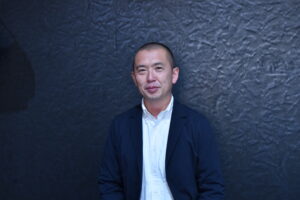 |
Naoya Nakamura is responsible for global business development at CARBON FLY, a Japanese scale-up company innovating the full-scale implementation of carbon nanotubes for global societal impact. Before joining CARBON FLY, he worked at the Luxembourg Trade and Investment Office in Tokyo, supporting Japanese startups’ global expansion, with a focus on the deep-tech, materials, and space sectors. |
 |
Since 2022
Research associate at FHNW Institute of Polymer Engineering, School of Engineering, FHNW University of Applied Sciences and Arts Northwestern Switzerland 2020 – 2022 Development engineer at V-Carbon GmbH, GER: Material- and process development for recycled carbon fibre intermediates and products Since 2020 Co-Founder at LUMAN Aerospace v.o.f., NLD: Composite design and prototyping of ultralight drone vessels 2017 Visiting researcher at Faculdade de Engenharia da Universidade do Porto, PT: Modelling of Composites with Abaqus User-Subroutines 2016 – 2020 PhD studies at TU Delft, Faculty of Aerospace Engineering, NLD: Laminate Design of Composite Bonded Joints 2012 – 20216 Development engineer at CTC GmbH Stade, GER: Manufacturing composite prototypes at TRL1-4 demonstrator level, NCF-preforming, infusion, integral sandwich design 2006 – 2011 Diploma (Dipl.-Ing.) in Mechanical Engineering at RWTH Aachen University, GER: ”Design and Construction“
|
 |
Dr. Lijiao Xun received her B.E. degree degree from East China University of Science and Technology in 2020. Since then, she has been pursuing her Ph.D. degree at the Institute of Chemistry, Chinese Academy of Sciences, under the supervision of Professor Tong Zhao and Professor Heng Zhou. Her research focuses on high-temperature-resistant structural battery integrated composites. Specifically, she introduces thermosetting resins with high thermal stability and excellent flame-retardant properties into the design of structural electrolytes, investigating the impact of the crosslinked structures of thermosetting resins on electrolyte performance. She aims to develop structural battery integrated composites capable of stable operation under high-temperature conditions. The related findings have been published in Advanced Science. |
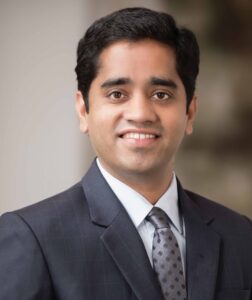 |
Dr. Srikanth Pilla is a Professor and Director of the Center for Composite Materials at the University of Delaware (UD-CCM) with faculty appointments in Mechanical Engineering, Chemical and Biomolecular Engineering, and Materials Science and Engineering. He is also the Founding Director of ‘AIM for Composites,’ a Department of Energy-funded Energy Frontier Research Center. Pilla also co-directs IDeAS Composites, an NSF National Research Traineeship program focused on training next-generation composite leaders.
Pilla earned his doctorate in Mechanical Engineering from the University of Wisconsin-Milwaukee with postdoctoral training from Stanford University. Before joining UD-CCM, Pilla held the ExxonMobil Employees Chair in Engineering at Clemson University and was the founding director of the Clemson Composites Center. Pilla also worked as an Assistant Scientist at the University of Wisconsin-Madison. Pilla’s research interests lie in the fundamentals and applications of sustainable and lightweight functional materials and manufacturing. He has co-authored over 150 peer-reviewed archival publications. His research is supported by NSF, DOE, USDA, DOD, and NASA, as well as several foundations and industries, including automotive OEMs and their suppliers. Pilla is a fellow of the Society of Plastics Engineers and is the recipient of the 2021 Green Chemistry Challenge award from the Environmental Protection Agency and the 2022 Team award from the Department of Energy Vehicle Technologies Office. |
 |
1] Machine Learning Driven Morphology Analysis of CFRP: Advancing Composite Sustainability
2] Complexity and variability increase as CFRP sustainability requirements incorporate discontinuous fibers and thermoplastic matrices. Machine learning provides a promising approach for analyzing CFRP morphology and mechanical properties, overcoming challenges posed by complex internal geometry. This presentation highlights current outcomes and the potential of machine learning aided morphology analysis in advancing CFRP sustainability. 3] Headshot attached 4] Dr. Yi Wan received his Ph.D. from the University of Tokyo in 2017 and is currently a faculty member in the Department of Systems Innovation at the Graduate School of Engineering, University of Tokyo. His research focuses on the internal morphologies and mechanical properties of CFRP. Dr. Wan has led numerous projects and international collaborations, including work on internal geometry evaluation and mechanical modeling of carbon fiber reinforced thermoplastic sheet molding compounds (CFRTP-SMC), as well as the development of fabrication processes and mechanical property evaluations for recycled CFRTP. |
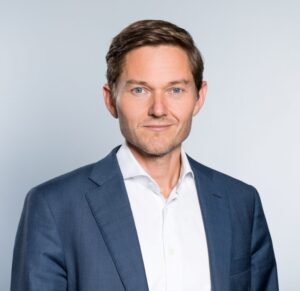 |
Since January 2021, Prof. Dr.-Ing. Holger Ruckdäschel has been a full professor for Polymer Engineering at the University of Bayreuth. He is also a member of several institutes, including the Bavarian Polymer Institute, and maintains strong connections with industry. Since January 2022, he has served as CEO of Neue Materialien Bayreuth GmbH, a non-academic research institute with 60 employees focused on developing new materials and processing technologies for industrial transfer. Ruckdäschel excels at bridging science, technology, digitalization, sustainability, and business.
Before his academic career, he worked for 13 years at BASF, where he led digital strategy for the Performance Materials division. His career at BASF also included polymer research, leading a global wind energy research team, and developing technology strategies for plastic additives. He managed multi-million-dollar budgets and global teams throughout his time there. Ruckdäschel holds multiple degrees in materials science, digital leadership, data science, and business model innovation. His current research spans resins, composites, polymer foams, functional thermoplastics, additive manufacturing, and recycling, with a focus on integrating digitalization and sustainability. He holds numerous patents and has published widely. At Neue Materialien Bayreuth and the University of Bayreuth, he oversees around 100 people, including 35 PhD students.
|
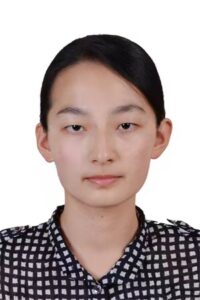 |
Yiyin Liu, Master degree, engineer in the field of composite materials. Engaged in composite materials testing and development for 6 years, working in AVIC Composite Co., LTD. Published 3 papers, compiled more than 10 enterprise and group standards.
|
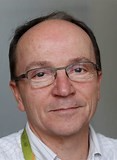 |
In the field of epoxy thermosets, diglycidylether of bisphenol-A (DGEBA) is the most common resin used due to fast curing with diamine or anhydride compounds and to the production of low cost and high thermal properties thermosets. However, due to health and environmental concerns, the design of safer resins is today a hot topic. In this presentation, the design of novel biobased epoxy monomers from lignin, vegetable oils and abietic acid together with their use as source of high performance thermoset materials will be discussed.
|
 |
1] Recycling technology development strategy based on LCA and its sensitivity analysis2] Although FRP was less consumed than metal materials and plastics, it will ‘really’ have to be recycled in the near future. In order to consider the direction of creating more valuable FRP services on the basis of recycling as well as minimising the impact of climate change and resource depletion, there is a growing need to develop and improve the accuracy of FRP’s LCA. This presentation will show how data incompleteness in LCA can be considered and how decisions can be made.
3] Headshot attached 4] He received his Ph.D. in 1992 from the University of Tokyo, Japan in Mechanical Engineering. From 1992 to 2000, he worked at national research institutes (AIST) and promoted national programs on composite materials, including standardization of testing methods, ultra-high temperature applications, structural health monitoring, recycling of thermoplastic composites, and life cycle assessment. Since 2000, he has been working at the University of Tokyo, where he has promoted several national projects on energy conservation and CO2 reduction in the automotive and wind power sectors and conducted research on CFRTP and its recycling. |
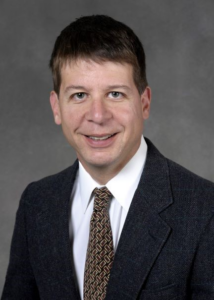 |
Pete George is a Boeing and SAMPE Fellow materials and processes engineer with over 30 years of engineering experience with composite material characterization, processing and application development. He is Boeing’s technical focal for composites recycling working internally and collaboratively with academia and industry to advance knowledge, readiness and implementation of the science and technology. |
 |
Dipl.-Ing. (M.S.) and Dr.-Ing. (Ph.D.) degree in Material Engineering at University of Paderborn, Germany. Executive director of CCIC, LDS Chair Professor in Advanced Materials and Composites of UNNC, Fellow of SAMPE (F. SAMPE) and Academician of APAM (Asia-Pacific Academy of Materials). He was also former coordinator for ECO-COMPASS and Beijing Engineering Laboratory of Green Composites. He published over 400 papers, 10 books and about 80 invention patents. His research interests includes structural composites, polymer materials, functional composites, process engineering, materials modelling, adhesive bonding and surface technology. |
Ranji Vaidyanathan Life-long contributions to the advancement of science and engineering of composite materials through support of student entrepreneurship, education of students to accept leadership roles in SAMPE and development and transition of composite technology to industry, resulting in tangible impact on quality of life, economic development, and welfare of society.
Mr. James Mazza is a highly sought-after industry leader in adhesive bonding and repair technologies, contributing significantly to our materials and processes community. His expertise enabled implementation of repairs on critical military systems worldwide. In mentoring colleagues, future engineers, and SAMPE leaders, Jim is the embodiment of a SAMPE Fellow.
George Hansen is a pioneer in the development and application of advanced composite materials technologies. He is at the forefront of research and manufacturing in multifunctional composite systems for the most demanding of applications, including electromagnetic properties in otherwise non-conducting materials for shielding and electrical conductivity within composites.
Arnt Offringa studied aerospace engineering at the University of Delft. He started his career in 1985 as a design engineer at Fokker Aircraft. In 1989 he joined Fokker Special Products and started a market oriented thermoplastics R&D effort. In 1991 an R&D department was created and in 1996 he became manager Engineering. In 2003 he became Director R&D of Fokker Aerostructures. As of 2019 he is GKN Aerospace’s Head of Technology for Thermoplastic Composites and responsible for the GKN Global Technology Center Netherlands. Arnt is a member of SAMPE Global and Past President of SAMPE Europe.
Prof. Dr. Frank Henning has been Managing Director of the Fraunhofer Project Centre for Composites Manufacturing in Ulsan, Korea and since 2011 of the Fraunhofer Project Center for Research in London, Ontario, Canada. Since 2010, Henning has been an Adjunct Research Professor in the Department of Mechanical & Materials Engineering, Faculty of Engineering at the University of Western Ontario in Canada. In 2009, he was named Deputy Director of the Fraunhofer Institute for Chemical Technology (ICT) in Pfinztal, Germany, as well as Director of Fraunhofer FIL in Augsburg, Germany. In 2008, Henning was appointed Professor for Light-Weight Technologies at Karlsruhe Institute of Technology in Germany; and that same year, he was appointed CEO of the Fraunhofer innovation cluster KITe hyLITE – Karlsruhe Innovation Cluster for Hybrid Light-Weight Solutions. In 2005, Henning became Director of the Competence Centre for Automotive Light-Weight Solutions. In 2002 he was named Director of Polymer Engineering at Fraunhofer ICT. He has been Vice-President of SAMPE Germany e.V. since 1999 and is President since 2016. In the years 1997 to 2001, he was Group Leader for the composites team at Fraunhofer ICT. Henning holds a Ph.D. degree in Composites Engineering from the Universität Stuttgart in Germany earned in 2001. He earned his Diploma in Mechanical Engineering from the same university in 1996. He published numerous articles in refereed journals and owns patents in the field of polymer manufacturing. He was awarded multiple times for his achievements and introduced materials and technologies in industrial applications. He has more than 20 years of experience in polymer engineering with a special focus on composite processing.